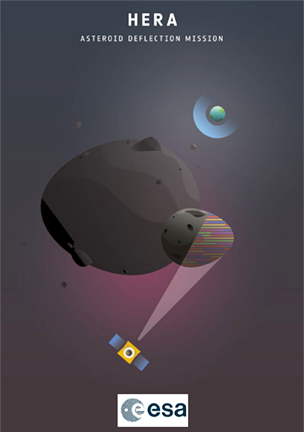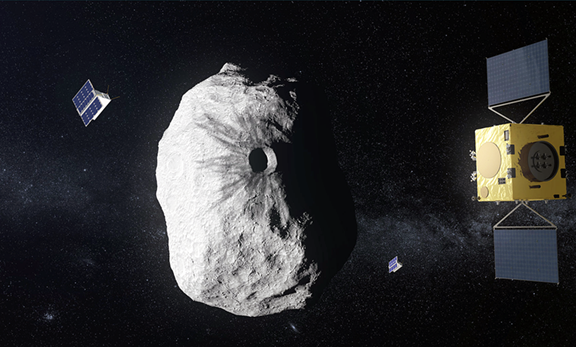

The continued development of the Juventas Cubesat is the focus of an addendum to the contract between GomSpace A/S and the European Space Agency (ESA) for the Asteroid Impact and Deflection Assessment (AIDA) mission, although final approval for this mission has not yet been approved by Europe’s space ministers as of this writing. That is expected to occur during ESA’s Space19+ meeting this month.
The total value of this contract to be shared among several partners is 1,165,000 euros, with the focus being the development of smallsat payloads in support of ESA’s Hera mission, which itself is part of the AIDA and NASA DART missions. The GomSpace share of the funding is 295,000 euros.
Travel to the Didymos binary asteroid system is the goal. Juventas is a 6U cubesat that contains a low frequency radar as the primary payload and the smallsat will operate in close proximity to the Didymos asteroid system to perform radar and radio-science experiments that target the moon of the binary asteroid, nicknamed Didymoon.

Artistic rendition of Hera at Didymos.
Image is courtesy of ESA.
The mission will be completed when the smallsat attempts to land on the surface of Didymoon to take measurements on the landing dynamics from likely bouncing events to capture details of the asteroids surface properties.
The mission will end with measurements taken by a gravimeter payload to give insight into the dynamical properties of the asteroid.
GomSpace is the project lead with the science team, including collaborators from the Royal Observatory of Belgium and the University of Grenoble Alpes. The project continues its collaboration with:
- GMV Innovating Solutions from Romania leading the guidance, navigation and control subsystem
- Brno University of Technology from the Czech Republic contributing to the radar digital design
- Astronika from Poland delivering the radar antenna.
This addendum adds new partners to the Juventas team, including EmTroniX from Luxembourg who will deliver the radar electronics and GomSpace Luxembourg who will contribute to the mission operations and AIV activities.

Niels Buus
Niels Buus, CEO of GomSpace, said Juventas will be the first GomSpace designed nanosatellite in deep space demonstrating its capabilities in the most harsh of environments to date.

